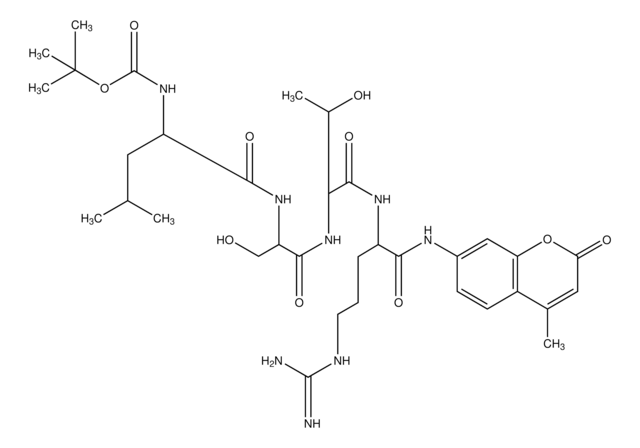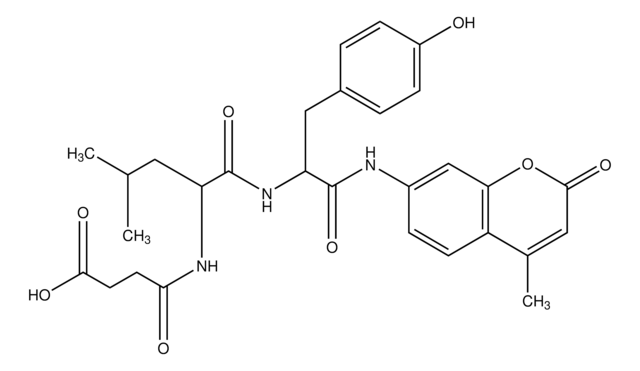S6510
N-Succinyl-Leu-Leu-Val-Tyr-7-Amido-4-Methylcoumarin
≥90% (HPLC)
About This Item
Produtos recomendados
Ensaio
≥90% (HPLC)
forma
powder
solubilidade
0.1% trifluoroacetic acid in acetonitrile: water (3:1): 1 mg/mL, clear, colorless
temperatura de armazenamento
−20°C
cadeia de caracteres SMILES
CC(C)CC(NC(=O)CCC(O)=O)C(=O)NC(CC(C)C)C(=O)NC(C(C)C)C(=O)NC(Cc1ccc(O)cc1)C(=O)Nc2ccc3C(C)=CC(=O)Oc3c2
InChI
1S/C40H53N5O10/c1-21(2)16-29(42-33(47)14-15-34(48)49)38(52)43-30(17-22(3)4)39(53)45-36(23(5)6)40(54)44-31(19-25-8-11-27(46)12-9-25)37(51)41-26-10-13-28-24(7)18-35(50)55-32(28)20-26/h8-13,18,20-23,29-31,36,46H,14-17,19H2,1-7H3,(H,41,51)(H,42,47)(H,43,52)(H,44,54)(H,45,53)(H,48,49)
chave InChI
UVFAEQZFLBGVRM-UHFFFAOYSA-N
Categorias relacionadas
Amino Acid Sequence
Aplicação
Ações bioquímicas/fisiológicas
Embalagem
Substratos
Certificados de análise (COA)
Busque Certificados de análise (COA) digitando o Número do Lote do produto. Os números de lote e remessa podem ser encontrados no rótulo de um produto após a palavra “Lot” ou “Batch”.
Já possui este produto?
Encontre a documentação dos produtos que você adquiriu recentemente na biblioteca de documentos.
Artigos
DISCOVER Bioactive Small Molecules for Nitric Oxide & Cell Stress Research
Nossa equipe de cientistas tem experiência em todas as áreas de pesquisa, incluindo Life Sciences, ciência de materiais, síntese química, cromatografia, química analítica e muitas outras.
Entre em contato com a assistência técnica







